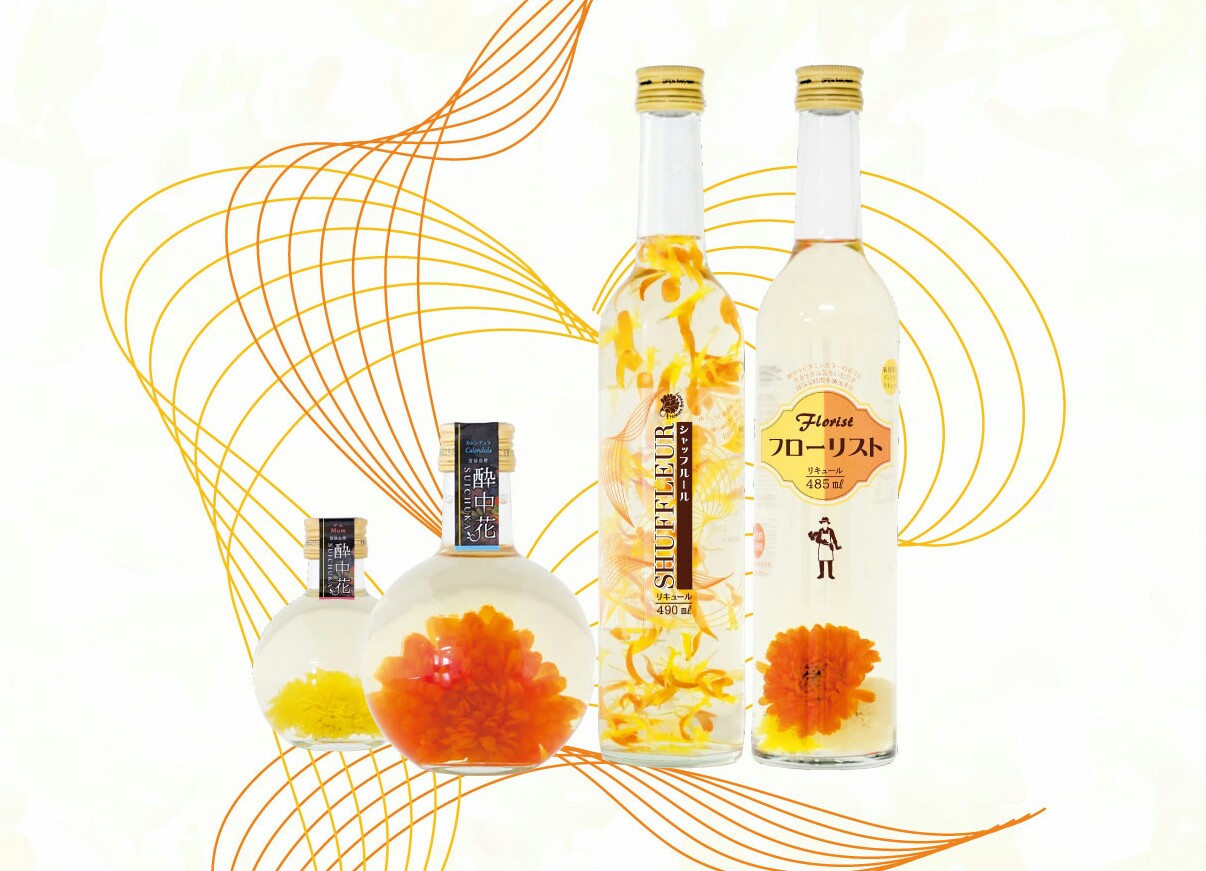The Aichi Prefecture-based Hokoen flower garden has gone and created their own category of liqueur: “Interior Liqueur.” Part room decoration, part liqueur, the idea is that the bottle looks just as good sitting on your table as it tastes when going down.
So the Chrysanthemum is just one of many edible flowers. Hokoen, which specializes in Chrysanthemum seeds and seedlings, used selective breeding to create a variety of the flower which can be eaten raw. Not that I know how to cook flowers anyway! The flowers are then bottled with flavorful liqueurs, resulting in a colorful and aromatic bottle that should bring a touch of floral beauty to any backbar.
Chrysanthemums and alcohol have a long history in Asia, with the first chrysanthemum-flavored alcohol made in China around the 3rd century AD. It made its way over to Japan by roughly the 8th century, with variations involving sake, shochu, and umeshu. These days edible chrysanthemums are a fairly common accent when ordering sake at traditional ryotei. And they sometimes accompany sashimi spreads as well. The flowers, when eaten, are said to reduce eye strain, headache, rashes, and even the common cold.
There are three new liqueurs being released by Hokoen today, all using edible Chrysanthemum flowers and/or petals in the bottle, with no artificial coloring.
- “Hanachuka” uses a white wine-based liqueur and comes at 11% abv, 300ml in a globe-shaped bottle. There’s a whole Calendula flower in this one — not just the petals.
- “Shuffleur” is also white-wine based, at 11% abv, and 490ml. Since this one contains only flower petals, they’re free to dance around inside the bottle as you move it around.
- “Florist” contains three whole flowers: one orange, one yellow, and one white.
Hi there! I created and run nomunication.jp. I’ve lived in Tokyo since 2008, and I am a certified Shochu Kikisake-shi/Shochu Sommelier (焼酎唎酒師), Cocktail Professor (カクテル検定1級), and I hold Whisky Kentei Levels 3 and JW (ウイスキー検定3級・JW級). I also sit on the Executive Committees for the Tokyo Whisky & Spirits Competition and Japanese Whisky Day. Click here for more details about me and this site. Kampai!

